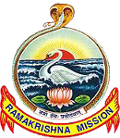We are glad to announce that Ramakrishna Mission Vivekananda Educational and Research Institute (RKMVERI) will be conducting a special colloquium on “Regulation of eukaryotic cell cycle by post-transcriptional and post-translational processes” on 21 February 2025, 12 Noon at Seminar Hall, Narendrapur Campus.
Speaker : Prof. Partha Saha, Biophysical Sciences Group, SINP
Co-ordinator: Prof. Abhijit Chakrabarti
Abstract
Regulation of cell cycle progression is critical for controlling the DNA replication at the initiation step via a licensing mechanism involving reversible post-translational modifications of several proteins. Ku, a heterodimer protein well-known for its role in DNA repair, is also involved in other important cellular processes including replication initiation. The role of Ku70 subunit in preventing re-replication has been established during S, G2 and M-phases when it is phosphorylated by cyclin-Cdks. Interestingly, Ku70 is also ubiquitinated periodically – at G1-phase and again at early S-phase. Since Ku binds to replication origin during early G1-phase and S-phase, we hypothesize that temporary ubiquitination of Ku70 during G1 and early S-phases removes Ku from replication origin after its licensing-related function. The protein abundance during cell cycle progression and other cellular processes is also modulated at translational level which can be regulated by various cis-elements present in untranslated regions (UTRs) of transcripts. RNA G-quadruplex (rG4) structure is one such element that can influence the fates and functions of mRNAs, especially the translation process. The presence of rG4 structures in 5′-UTRs of mRNAs generally represses translation. We have identified an evolutionarily conserved rG4-forming sequence motif at the extreme 5′-end of the unusually long 5′-UTR in the transcript of human cIAP1 encoding the periodically expressed cellular inhibitor of apoptosis protein-1 that promotes cell survival by suppressing apoptosis and is overexpressed in various cancer cells. The formation of an intramolecular and parallel rG4 structure at the sequence stretch is confirmed in vitro and in cell. Interestingly, the rG4 structure enhances translation in an IRES-independent manner contrary to many earlier reports.
| Faculty/Staff Name | Details |
|---|---|
| Abhijit Chakrabarti (Primary Coordinator) | ARD – Narendrapur Campus |

